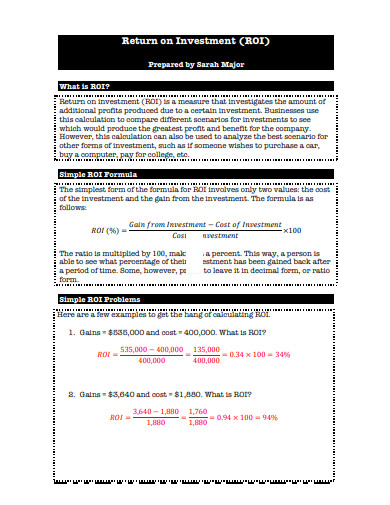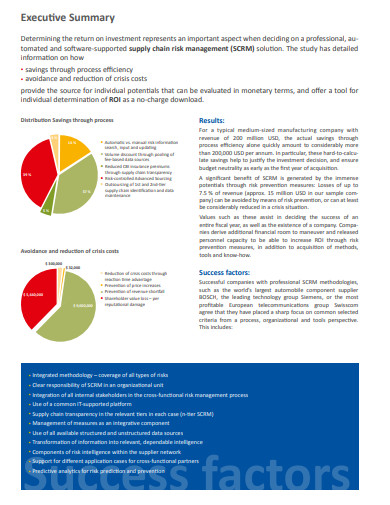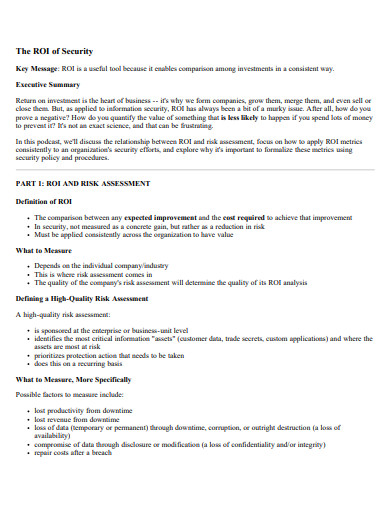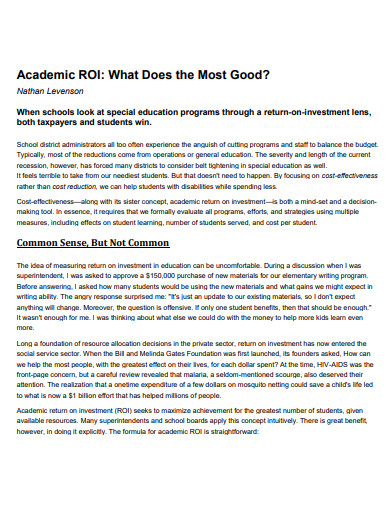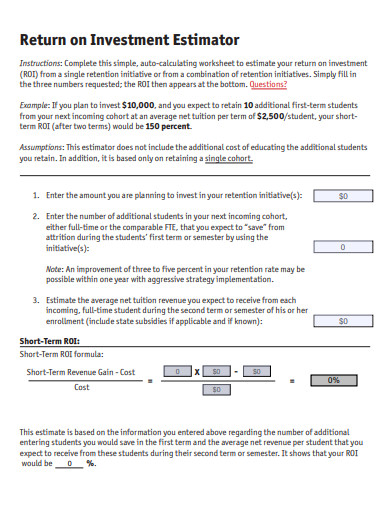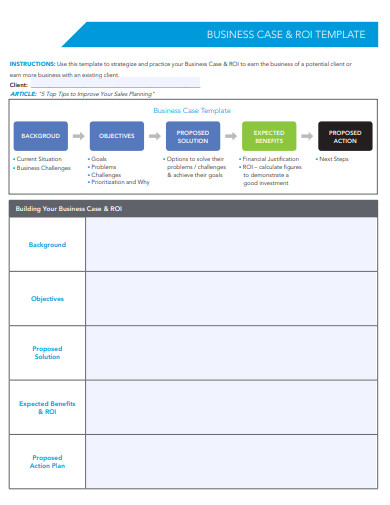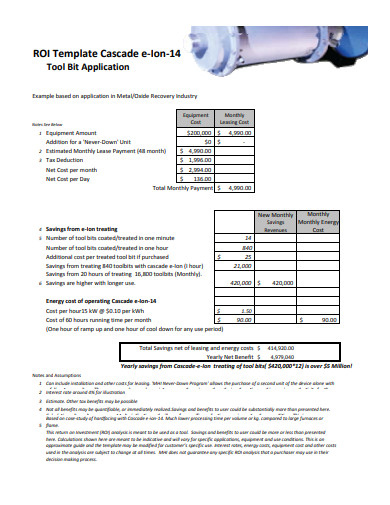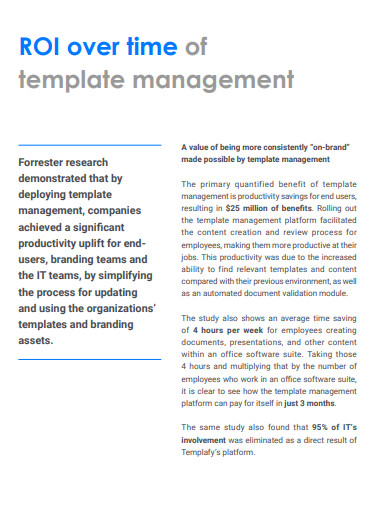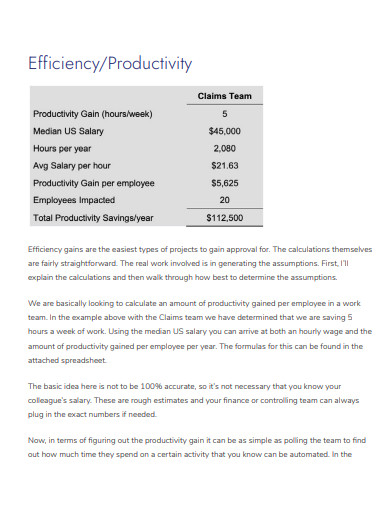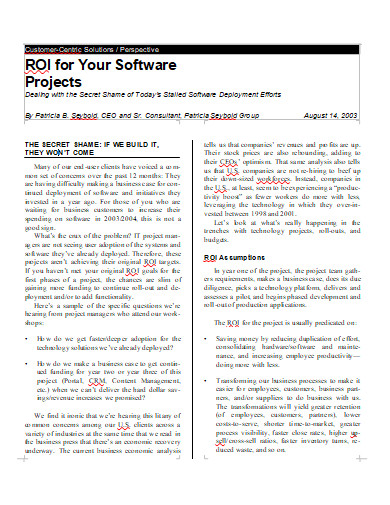Because of its adaptability and simplicity, ROI is a commonly used metric. Basically, ROI can be used as a crude indicator of the efficiency of an investment. This could be the return on a stock investment, the return on a manufacturing expansion, or the return on a real estate deal. The calculation is not very complex, and it is relatively simple to grasp given its vast variety of applications. If the ROI on an investment is net positive, it is definitely worthwhile. However, if additional chances with higher ROIs are open, these signals can assist investors in weeding out or selecting the finest options. Investors should also prevent negative ROIs, which indicate a net loss.
10+ ROI Template Samples
When you deposit funds into an investment or a company venture, ROI helps you comprehend how much gain or loss your investment has produced. Return on investment is a basic ratio that separates the net profit (or loss) from an investment by its cost. Since it is stated as a percent, you can assess the efficacy or profitability of various investment options. It is strongly connected to measures such as return on assets (ROA) and return on equity (ROE).
1. ROI Template
2. ROI of Supply Chain Risk Management
3. Influencer Marketing ROI
4. ROI of Security
5. Academic ROI Template
6. Return on Investment Estimator
7. Business Case and ROI Template
8. Sample ROI Template
9. Sample ROI Management Template
10. Project ROI Template
11. Formal ROI Template
Benefits of ROI Calculations
Simple and easy to calculate
Because it is so simple to calculate, the return on investment criterion is commonly utilized. There are only two figures required: the benefit and the expenditure. Because a “return” can means different things for different individuals, the ROI formula is simple to employ, as there is not a precise definition of “return”.
Universally understood
Return on investment is a widely established notion, therefore it’s almost certain that if you mention it in conversation, people will understand what you’re talking about.
Limitations
While the ratio is frequently highly beneficial, there are certain limits to the ROI calculation that you should be aware of. Two crucial factors to consider are listed below.
The ROI formula disregards the factor of time
A higher ROI may not always imply a better investment. For example, two investments have the same ROI of 50 percent . The first investment, on the other hand, is achieved in three years, whereas the second investment requires five years to achieve the same yield. The equal ROI for both investments muddled the wider picture, but when time is factored in, the investor clearly sees the better decision. The investor must compare two instruments over the same time frame and under the same conditions.
Susceptible to manipulation
An ROI calculation will vary between two individuals based on whatever ROI formula is employed. A marketing manager can apply the property calculation described in the example section without taking into consideration other expenditures such as upkeep, property taxes, transaction fees, stamp duties, and legal fees. An investor must consider the genuine ROI, which takes into account all potential costs paid when each investment rises in value.
FAQs
What is a good ROI?
What constitutes a “good” ROI will be determined by criteria such as the investor’s risk tolerance and the time required for the investment to earn a return. All else being equal, risk-averse investors will typically accept lower ROIs in return for assuming less risk. Similarly, investments that take longer to pay off will typically demand a greater ROI to be appealing to investors.
What industries have the highest ROI?
Historically, the S&P 500’s average annual ROI has been around 10%. However, depending on the industry, there might be significant variety within that. For example, numerous technological companies achieved annual profits considerably above this 10% benchmark in 2020. Meanwhile, companies in other industries, such as energy and utilities, had far lower ROIs and, in certain circumstances, experienced losses year over year. It is usual for an industry’s average ROI to alter over time due to variables such as increased competition, technological developments, and fluctuations in consumer preferences.
ROI is a simple and easy-to-calculate indicator for measuring the effectiveness of an investment. This frequently used method allows you to compare investment possibilities on an apples-to-apples basis. However, ROI cannot be the only indicator used by investors to make decisions because it does not account for risk or time horizon and necessitates an exact measurement of all costs. Using ROI to evaluate an investment is a fantastic place to start, but don’t end there.
Related Posts
FREE 10+ Brand Story Samples in PDF | MS Word
FREE 10+ Brand Guidelines Samples in PDF | MS Word
FREE 10+ Employee Offboarding Samples in PDF | MS Word
FREE 10+ Process Documentation Samples in PDF | MS Word
FREE 3+ Introduction About Myself Samples in PDF
FREE 10+ Process Map Samples in PDF | MS Word
FREE 10+ Decision Matrix Samples in MS Word | PDF | DOC
FREE 10+ Diversity and Inclusion Statement Samples [ University, Faculty, Value ]
FREE 10+ Bid Comparison Samples in PDF | MS Word
FREE 10+ HR Records Samples in PDF | MS Word
FREE 10+ Brand Brief Samples in PDF | MS Word
FREE 10+ Merger and Acquisition Template Samples in PDF | MS Word
FREE 10+ Cost Comparison Samples in PDF | MS Word
FREE 10+ Brand Pyramid Samples in PDF
FREE 10+ Workflow Mapping Samples in PDF | MS Word

